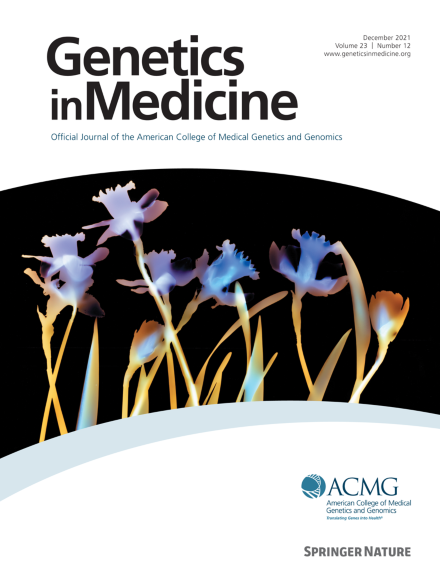Impact of laboratory-driven proactive reanalysis: Reclassification to positive in 5% of initially negative or uncertain exome sequencing cases
IF 6.2
1区 医学
Q1 GENETICS & HEREDITY
引用次数: 0
Abstract
Purpose
Reanalysis of exome sequencing (ES) data increases diagnostic utility; however, there is no consensus on when and under what circumstances reanalysis should occur. Requesting and performing ES reanalysis burdens both clinical and laboratory workflows. Maximizing the potential for reclassification is essential. Here, we describe the impact of a laboratory-driven proactive reanalysis process that triggers reanalysis when new evidence is identified.
Methods
We reviewed reanalysis outcomes of an ES cohort. Reanalysis events were categorized based on initiating factors (laboratory-driven proactive, family studies, and clinician-initiated). Laboratory-driven proactive reclassifications are prompted by systematic review of new scientific data. Outcomes were evaluated by initiating factors, reclassification types, evidence used, and time since original report.
Results
Overall, 23% of cases underwent at least 1 reanalysis, with 35% of reanalyses resulting in reclassification. There was a 4% increase in diagnostic yield, including 5% of initially unsolved ES receiving diagnostic reports. Diagnostic reclassifications rates were significantly higher for laboratory-driven proactive reanalyses (54%; P < .0001) than family studies (18%) and clinician-initiated reanalyses (4%). New gene-disease relationships were the most efficacious evidence source. Laboratory-driven proactive reclassifications occurred steadily over time.
Conclusion
Laboratory-driven proactive reanalysis effectively provides more diagnostic reclassifications compared with clinician-initiated reanalysis. Laboratories should curate and integrate emerging evidence into ES reanalysis.

实验室驱动的前瞻性再分析的影响:在5%的最初阴性或不确定的外显子组测序病例中重新分类为阳性。
目的:外显子组测序(ES)数据的再分析提高了诊断的实用性;然而,对于何时以及在何种情况下应该进行重新分析,并没有达成一致意见。要求和执行ES再分析增加了临床和实验室工作流程的负担。最大限度地提高重新分类的可能性是必不可少的。在这里,我们描述了实验室驱动的主动再分析过程的影响,该过程在发现新证据时触发再分析。方法:我们回顾了一个ES队列的再分析结果。再分析事件根据启动因素(实验室驱动的前瞻性、家庭研究和临床医生发起的)进行分类。实验室驱动的主动重新分类是由对新科学数据的系统审查引起的。通过起始因素、重新分类类型、使用的证据和原始报告后的时间来评估结果。结果:总体而言,23%的病例至少进行了一次再分析,35%的再分析导致重新分类。诊断率提高了4%,其中5%的最初未解决的ES收到了诊断报告。实验室驱动的主动再分析的诊断重分类率明显更高(54%;结论:与临床发起的再分析相比,实验室驱动的主动再分析有效地提供了更多的诊断性再分类。实验室应将新出现的证据整理和整合到ES再分析中。
本文章由计算机程序翻译,如有差异,请以英文原文为准。
求助全文
约1分钟内获得全文
求助全文
来源期刊

Genetics in Medicine
医学-遗传学
CiteScore
15.20
自引率
6.80%
发文量
857
审稿时长
1.3 weeks
期刊介绍:
Genetics in Medicine (GIM) is the official journal of the American College of Medical Genetics and Genomics. The journal''s mission is to enhance the knowledge, understanding, and practice of medical genetics and genomics through publications in clinical and laboratory genetics and genomics, including ethical, legal, and social issues as well as public health.
GIM encourages research that combats racism, includes diverse populations and is written by authors from diverse and underrepresented backgrounds.
 求助内容:
求助内容: 应助结果提醒方式:
应助结果提醒方式:


